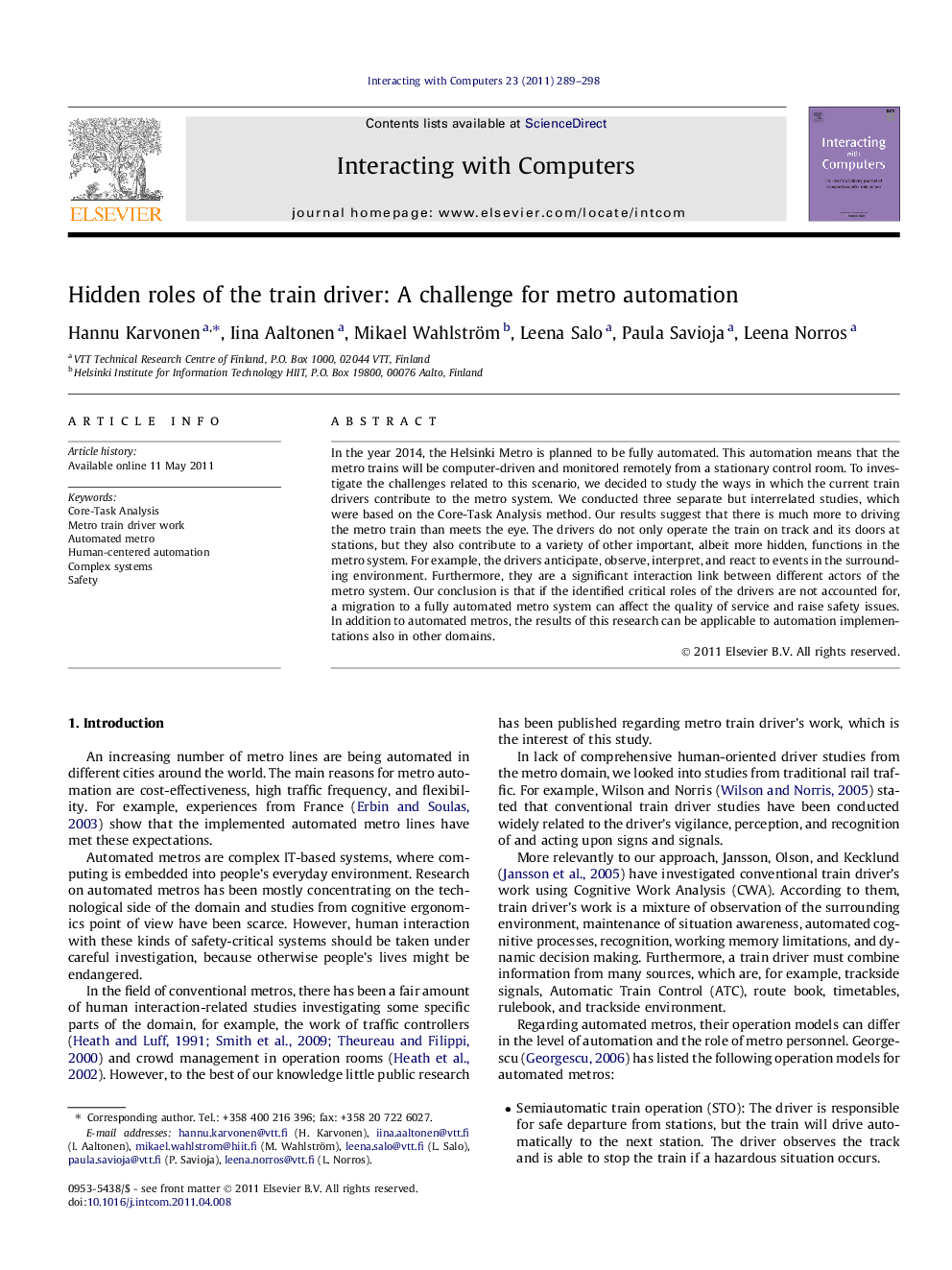| Article ID | Journal | Published Year | Pages | File Type |
|---|---|---|---|---|
| 551742 | Interacting with Computers | 2011 | 10 Pages |
In the year 2014, the Helsinki Metro is planned to be fully automated. This automation means that the metro trains will be computer-driven and monitored remotely from a stationary control room. To investigate the challenges related to this scenario, we decided to study the ways in which the current train drivers contribute to the metro system. We conducted three separate but interrelated studies, which were based on the Core-Task Analysis method. Our results suggest that there is much more to driving the metro train than meets the eye. The drivers do not only operate the train on track and its doors at stations, but they also contribute to a variety of other important, albeit more hidden, functions in the metro system. For example, the drivers anticipate, observe, interpret, and react to events in the surrounding environment. Furthermore, they are a significant interaction link between different actors of the metro system. Our conclusion is that if the identified critical roles of the drivers are not accounted for, a migration to a fully automated metro system can affect the quality of service and raise safety issues. In addition to automated metros, the results of this research can be applicable to automation implementations also in other domains.
► Train driver is an important intermediator in a metro system. ► There is more to driving the metro train than meets the eye. ► Train driver’s hidden roles are a challenge for metro automation.
